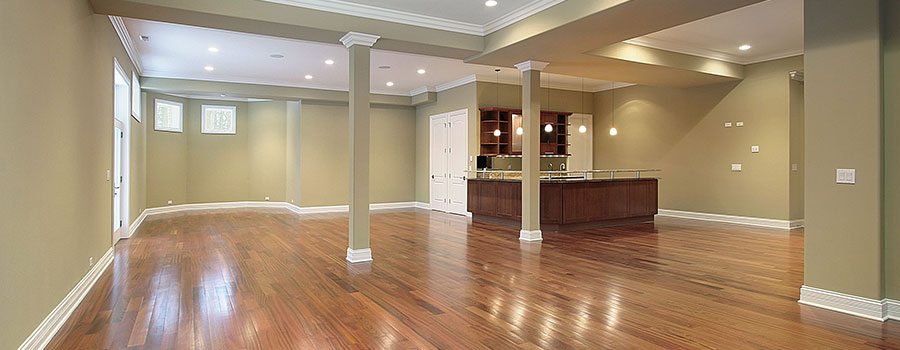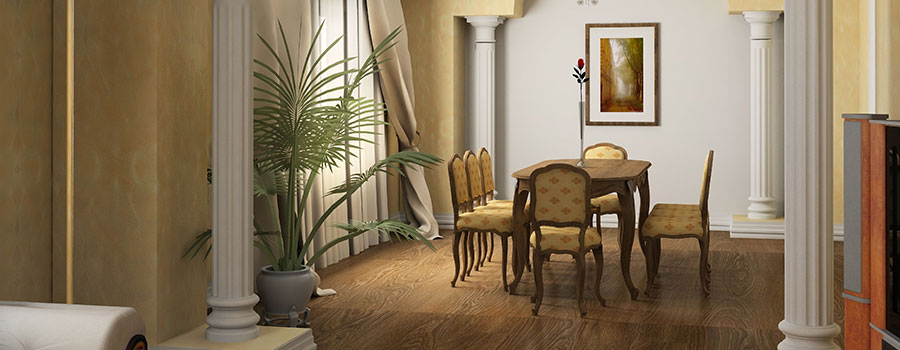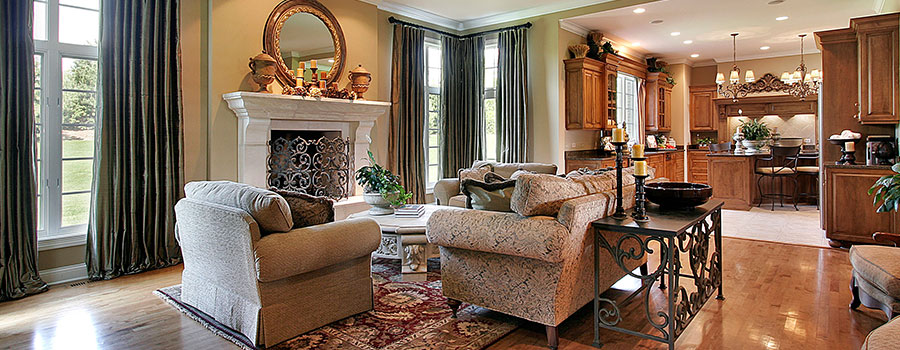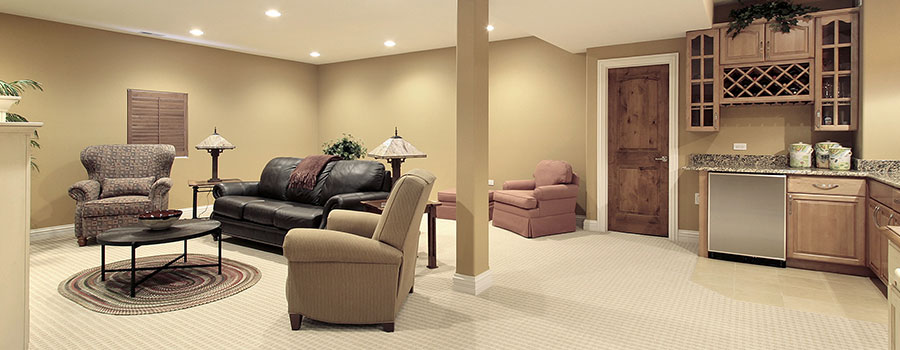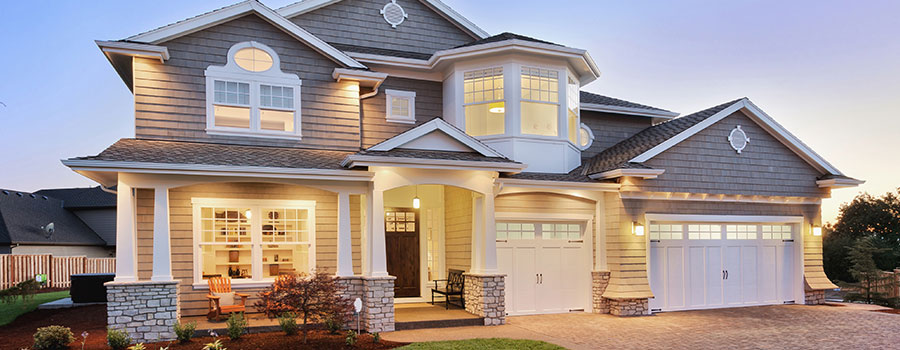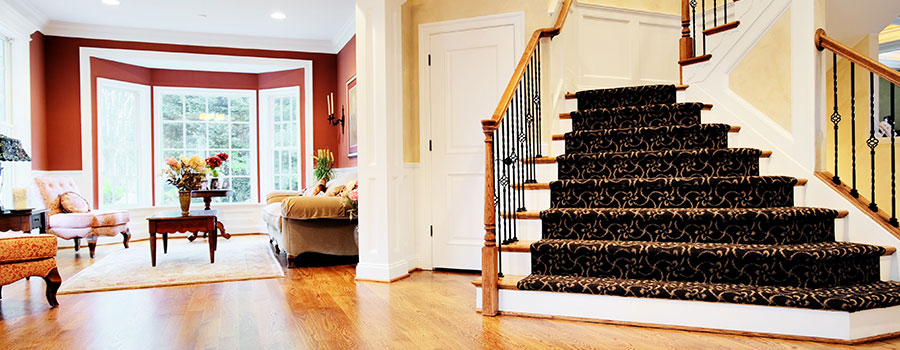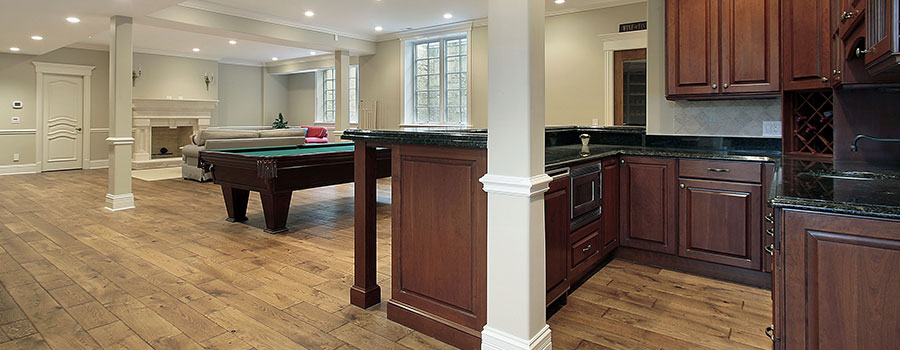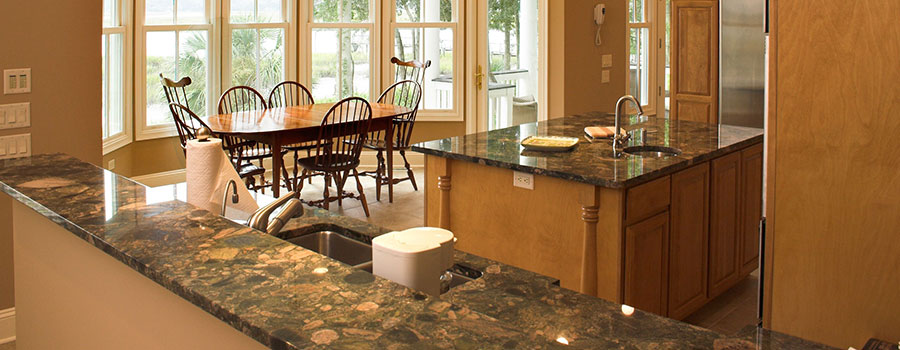Ways to Increase House Space Without Breaking Bank
If you are looking to increase the size of your house but don’t have a large budget, there are plenty of ways to go about it. These ways, as given by home addition contractors, include: Enclose the patio It will take a lot of effort to enclose a patio. Putting up walls, a roof, and a foundation, but if done right, it might become additional square footage. When doing the encasement, ensure it feels like a part of the house and is accessible from within. If you don’t want to take on such a large job, another alternative is to build a screened-in patio. Before you proceed with the addition, determine how you will use the contained space. Knowing the intended purpose will influence your design choices, whether it’s a dining space, a lounge, a home office, or an entertainment room. To avoid being on the wrong side of the law, check with your local authorities to see if the enclosure project requires any permissions or approvals. Always follow the building norms and regulations to ensure a safe and legal makeover. Finish the basement Unfinished sections in a house, regardless of level, are not included in computing the square footage of a home. So, if your basement has stud walls and bare concrete floors, you should think about finishing it. Before beginning the project: Determine whether the basement is suitable for finishing. Look for any signs of moisture, leaks, or structural damage. Check that the area has enough ceiling height and complies with local construction codes. Remember that finishing the basement may necessitate changes to your HVAC system, electrical panel, and plumbing connections. Consult a specialist to handle any necessary changes. Finish the garage It’s a Catch-22 situation. Finish your garage if you wish to add square footage. However, for your garage to be considered square footage, it must no longer be a garage. Even if you don’t want to go all out, you can build the garage of your dreams while still parking a car. Remember to seek the advice and expertise of professionals, such as contractors or architects, throughout the process. They can guarantee that the project complies with building codes, offer structural guidance, and assist you in achieving the ideal look for your finished garage. Enclose your porch Enclosing a porch, like enclosing a patio, can increase the square footage of your home. For the best outcome, ensure that the porch is heated, feels like a part of the house, and is accessible from within. To easily decide on the enclosure type, determine how you will use the covered porch. Will you use it all year as a sunroom, a home office, or something else? Understanding the goal will help you make design decisions. When it comes to the enclosure type you can go with, there are plenty of options. They include windows, screens, or a mix of the two. Windows give superior insulation and weather protection, while screens provide ventilation and a more open appearance. Choose the option that best fits your needs and budget. Add a small kitchen Consider expanding the size of your kitchen […]
Read moreCondo Remodeling Best Practises
Are you thinking about remodeling your condo? Here are valuable tips that will serve you right. Understand the space you have to work with You are considering doing a condo remodel because the size of your physical space has limitations you don’t like. The area might be too small, or you might not like its appearance. When you start a redesign, the items in the house can alter your perception of the space. You don’t have to clear them to measure the room, but it will assist. In any case, this minor action will be worth your time. The measurements of the room you are looking to renovate are an excellent place to start drawing a picture that will guide future planning. These essential dimensions should stay the same unless you begin removing barriers and expanding or altering the area. Relying too heavily on a single copy to remain intact throughout your project may result in time-consuming erasing and redrawing. So make multiple copies of the condo and the changes you want. The parameters will act as constant reference points during your renovation. Furthermore, always measure the furniture you intend to maintain and purchase. This includes anything from set pieces like sofas to side tables. Knowing the exact specifications of major objects might save time if your redesign requires a lot of rearrangement. Think about functionality As much as you want to improve your house’s look, you should consider its functionality. The adage “form follows function” really applies to most remodeling projects. Before you start the remodel, be honest about what you want your room to be to help define its function. Some of the functionalities you can go with include: Intimate setting for hosting guests Enough space for large gatherings. Your television room A decorated but appealing corridor leading to additional rooms It is critical to decide early in the planning process so that you may begin to design your perfect layout, furniture configurations, and decorations. If you want more room to lounge with your guests or close visitors, you could remodel your condo to arrange the seats so that everyone faces each other and set up a table where everyone can readily get refreshments. If you work from home and you are looking for more space that you can work with, begin your renovation designs by focusing on the greatest location for your work-from-home arrangement, then organize the lighting, seats, and so on. Pay attention to the colors. Color is a powerful tool for setting the tone of a room. Certain hues are relaxing or soothing, while others might stimulate activity. Variety also affects feelings, so don’t place too much emphasis on the hue of your walls. Sure, it’s vital, but think carefully about the color of everything in your condo. In general, begin with a color palette of two to four hues. Consider how much visual space the things in your condo will take up as you choose. You may begin with the walls, rugs, and furniture. The reason for this is that the color scheme of these larger items will have a corresponding impact on the […]
Read moreTricks to Reducing Wastage When Renovating
While remodeling a house can be extremely fulfilling as it makes the house livable and improves its appeal giving you an easy time selling it, there is always the issue of wastage. There is no shortage of waste materials at a renovation site, from shattered drywall and excess boxes to decrepit appliances and leftover materials. The unfortunate thing is that you spend money on these items, so every time you let them lie to waste, you waste them. Can you do a condo remodel or any other renovation project without wasting a lot? Well, the good news is that it’s possible. To help you out, here are tips you should follow: Sell the excess As much as you might try to be as economical as possible, it isn’t easy to accurately anticipate what you will require for a project ahead of time. Thankfully, you can ensure that any extra is not wasted by finding another purpose for it in the community. You can resell or give away unwanted items on Facebook using the Marketplace option, or by posting in specific groups such as Buy Nothing or Take My Shit. The NextDoor app also has a section for free and for sale items where you can post the items left behind after a renovation. You can also try local community groups that might be interested in purchasing your stuff. Consider the organizations near you and what they might require, then call out to inquire before delivering the goods. For example, a club that assists low-income neighbors with house repairs may require extra bathroom tiles, whereas a children’s support group may want excess paint and decals for classroom decorating or crafts. Buy what you want Nobody wants to get home, start a project, and then find they must return to the store for more paint, tiles, or whatever. However, overbuying a product, such as paint, is far more prevalent than underbuying, and only some are used. Though it may be tempting to shop in bulk to take advantage of lower prices and save on future excursions to the store, only buy what you need. A great way to ensure you don’t buy more than you need is to take your time and analyze the items you need. A great way to do it is to get quotes from different companies and buy only what is necessary. Work with an expert Homeowners might need help understanding their alternatives for decreasing remodeling waste on larger projects. A lot of times with construction, I think people feel a little bit like it’s outside of their control in specific ways because there aren’t many obvious resources for where to find that information. But feel free to ask your contractors if they agree with you on decreasing waste and how they intend to do so. Working with a skilled professional with a plan is crucial to achieving zero waste or coming close. Regarding construction materials, work with experienced pros to help you do all kinds of cool things with leftover materials, such as repurposing countertop remnants in a powder room or a home bar. Use secondhand products or […]
Read moreTips to Consider When Remodeling Your Home
Whether you’re planning a home addition, eco-friendly home upgrade, condo remodel, or basement extension, you need to consider a number of tips to realize your idea as smoothly as possible. Some of the tips you need to consider include: Get the necessary permits and permissions. Before you get away with home improvement ideas and contractors, be sure you have everything in order. This entails obtaining the necessary regulations and permits to begin construction work lawfully. The particular standards and papers you must give will differ by state, but the goal is the same. Many people think permits are a hard obstacle to stop you from doing what you want. However, they protect the value of your property and your neighborhood by keeping the things that made you want to live there in the first place. Remember that you need an electrical, mechanical, or plumbing work permit. The type of permit you need varies from city to city, so always check the local building code and requirements to ensure you get the right one. Homeowners often try renovating their homes without permission, which can be very expensive if caught. If the authorities find out that you remodeled your house without them, you might have to tear down the addition and lose all the time and money you’ve spent on it. If you want to sell your house, you will also need the permit papers. Without them, you will lose money on the house. If you live in an area with a Homeowners Association (HOA) or a designated historic neighborhood, you may need permission from both the local government and these groups. It is important to know that some local building officials may want you to work with an architect before they give you permissions and permits. Even though it’s not required by law, it’s a good idea to let your neighbors know what you plan to do and how long it will take. This way, they won’t keep complaining whenever they hear noises from your house. Have a budget You need to have a budget and ensure that you have enough money. You should note that a lack of funds will rapidly bring your project to a halt or force you to make big changes to your plan, and you don’t want this, do you? When planning a home addition, it is critical to understand home addition costs to create a comprehensive budget. The first step to generating a budget is to find out what design options are available, the likely costs and problems, how long the project will take, and what needs to be done regarding planning and building regulations. Always remember that the decisions you make at the beginning of the project will affect the whole project and set the tone for how you approach the building work and how much you spend. Many cases have been reported of contractors collecting money and running away. To avoid this, ask the contractor to start working and pay them milestones to ensure they are dedicated to the project and will stay with your money. If you must pay before, pay the […]
Read more6 Things to Think About When Planning Your Home Addition
When planning for a home addition, you need to think about plenty of things. These things include: Your needs and wants These might sound the same, but they are pretty different. You might need a home addition because your family has grown since you bought your house, and you now need additional space. You do this because you can’t afford to buy a bigger, newer house right now, so you need to add to the one you have. On the other hand, you can add to your house or fix it up to increase its value or make it look better. These two reasons have different approaches, and the type of addition you go with will heavily rely on them. Once you have identified whether you need or want your home addition, you should consult home addition contractors to help you brainstorm the best project to go with. If you want to make your home bigger, add a master bedroom or a bathroom. You could also add a family room or home office to give your kids a place to play or give yourself a place to work. Think about whether you want or need the extra space and what kind of room would work best for your family, then work with the contractors to make your dream a reality. Budget How much are you looking to spend on the project? You need to think about this. If this is your first time doing it, you should consult an experienced professional to help determine the amount of money you should set aside for your project. Required legal documents In most jurisdictions, you need to get paperwork showing whether you can officially build the home addition. So, always get them to avoid being on the wrong side of the law. You’ll need to get some permits, like a building permit, to ensure that the addition is allowed on your lot based on the rules in your area. You’ll also need plot plans that show that the addition will stay on your land. In most cases, you’ll need floor plans for your home addition to determine how much space it will take up on your lot. You can get legal plans for your property from the Registry of Deeds in your area, but you must call them first to ensure you have all the information you need. They will also direct you to the right place to get the relevant documents. You must visit your town or city hall to get the other papers. Again, it’s best to call before going to the office to avoid wasting time looking for papers in the wrong place. Inspection of the existing utilities Before you can think about building, you need to know how your utilities are set up so that you don’t damage them as you add the new house. If you add a whole second floor, you will need more electricity and put a lot of pressure on your drainage system. As you can tell, your home addition must have all the services needed to be livable, like lights, running water, and other amenities. When […]
Read moreGuide to Having a Smooth Process Adding a Home Addition
You can improve your living space without moving by adding to your house. If you add an extra room or a second floor to your current layout, everyone will have their own space. If you are a homeowner and want to raise the value of your home, adding a few square feet can be a great way to do so. Adding a bathroom, master bedroom and bathroom, sunroom, or second story can significantly raise the value of your home when it comes time to sell it. When you are planning, budgeting, and designing a home addition, there are several things you need to pay attention to for you to have a great addition. These things, as given by home addition companies, include: Define the reason for the addition Ask yourself why you want to add on to your house. You should tell the contractors on the job what your goals are, like giving your kids more space or giving your guests their bathroom. They usually know the easiest way to schedule these repairs so that the renovation project meets your goals and causes you the least trouble. Understand the permits and restrictions involved. When you add on to your house, you need permits and inspections from the city or county. These restrictions are meant to keep things from going wrong in the future and make sure that the building meets all the rules. Also, getting the right permits and inspections is important to ensure the work is done right, which is important when selling a home. If you know about the necessary permits, the structure might be safer than it is. Check out your city or county’s building and zoning websites to learn about your area’s restrictions. Most permits are for electrical, plumbing, and gas, but depending on where you live, there could be many more checks, like a limit on how many stories you can access well or sewer water sources. Some rules say how close your building can be to your neighbors, the curb, or the lots on either side. You should note that you might have to do a property survey to ensure that your planned addition doesn’t break any rules about property lines. In many jurisdictions, the homeowner, not the contractor, is the one who needs to ask for and get these permits, so make sure you know who is in charge of each step. Have the proper budget. Remodeling can be expensive. Consider the current value of the whole house to get an idea of how much your remodeling project will cost. A significant addition will probably cost at least 10–15 percent of your home’s value. After talking to contractors about how much the work will cost, figure out how you will pay for it. Paying with your savings, a loan, or a home equity line of credit? The budget has to fit into the amount of money that is available. You can be creative with how you pay, and many contractors would rather have a payment plan than one big lump sum. To save money, you could do some demolition work yourself, use old […]
Read moreTips To Consider When Renovating Your House
If you want to fix your house but are unsure where to start, you’re not alone. Many people start planning a home improvement project without knowing what to expect. When things go wrong during renovations, they only realize they should have had a plan. If you don’t plan, renovating your home can disappoint you. This is because, unlike when you build a new house, you aren’t starting from scratch. There can be costs and problems that come up out of the blue that makes the process harder. So, before you start down the winding road of home improvement, here are several things given by home addition contractors that you need to know to have a great project: Start with the kitchen. People often want to know in what order they should make home improvements. It’s best to start with the kitchen because these renovations add value to your home. If your kitchen is old and worn out, updating it will let you enjoy it more at home. You should also remodel the kitchen first because it will create the most dust and debris you don’t want to get on freshly painted walls or new finishes. Putting plastic over doorways or passageways is a good way to keep demolition mess from spreading. Remember that a big kitchen remodels usually takes several months, so you’ll need to set up a temporary kitchen in your dining room, family room, or a nearby room. Spend time in the space. Even if it seems obvious, you should wait to decide on things like paint colors, carpet, and light fixtures until you’ve spent some time in the space you’re fixing up. For example, if you want to replace an old carpet, there are many options. Dense or loose fibers? Or no pattern at all? What shade of gray should you go for? The answers depend on choosing paint colors and other parts of the renovation. Even if you choose paint colors before remodeling, you still need to see them on the walls. As you spend more time in the house, you might change your mind about the house colors. Also, newly painted walls and new carpet can show that the lights you already have don’t give off as much light as you thought, and you are forced to change them. Before you paint or replace the carpet in the room you’re remodeling, take a few minutes to think about how everything fits together. This will save you from having to go back to the drawing board and spend a lot of money on it. Don’t hire the first contractor. It pays to talk to multiple contractors and look at their bids. Many people make the mistake of hiring the first contractor that they come across, but this isn’t the right way to go about it. Instead, you should talk to three or more contractors and compare their bids. You might be tempted to hire the cheapest but don’t go this route, as chances are the contractor isn’t experienced enough and will most likely botch your project. At the same time, you shouldn’t hire an expensive one […]
Read moreTips to Having a Great Time Renovating Your House
As much as you are improving the look of your house, house renovation can be one of the most stressful parts of owning a home. Over the years, you’ve probably heard many horror stories about home buyers caught off guard by unexpected costs, lousy work, and delays. In the worst cases, the contractor would disappear with the money, leaving the homeowners high and dry. Choosing the right contractor is a hard job by itself, but once you’ve made your choice, getting the contract right is another way to help avoid problems in the future. Whether doing a condo remodel or any other remodeling project, here are tips to ensure you have a great time handling the project. Avoid upfront payments It goes without saying that if you pay upfront, contractors or designers who aren’t honest could run away with your money. If the work turns out to be bad, getting your money back will be harder. To stay safe, pay as little as possible upfront, and ensure you have a good payment structure that works in your favor. A great way to do it is to make payments in parts, like 10% when the floors are done, 40% when the kitchen is done, and so on. You should only pay for the work once it’s done. You should avoid paying more than 20% to start work. If you have to pay more than that, ask your contractor why they need such a hefty payment upfront. It will be better if you add a schedule to these milestones so that the contractor has to meet both the schedule and the standards. Ensure all defects are fixed beforehand. Even when working with the most experienced contractors, problems might arise. You might assume that the contractor will fix all problems before handing over, but some contracts need to be clarified. Some contracts say a problem can be fixed within a certain amount of time (up to 30 days after the job is done), while others may not even mention the problem. Pay attention to the fact that some contracts put all responsibility on a subcontractor. For example, if there is a problem with the electrical work, the contract might say that you have to talk to the electrician on your own. Always ensure that defects are fully dealt with and spelled out in the contract to your satisfaction. Don’t forget that the last payment should not be due the contractor has fixed until all the problems. Have written proof. Don’t count on verbal promises or confirmations because you can’t prove them later. Whatever your contractor agrees to or changes, it must be in writing. You can do this through email, text messages, or written documents. When things are written down, they are not only binding but also less likely to be misunderstood. Ask about warranties What happens if your cabinets start to bend after only a year? Or if the tiles are already beginning to lose their color? Some materials may come with a warranty that lasts a lifetime, while others may not have any warranty at all. Whether buying materials or working […]
Read moreHome Renovation Projects That Turn Buyers Off
If you are looking to sell your house, there are several tricks you can use to boost your home’s value, such as planting trees, adding a bedroom, and so on. However, some projects might diminish their worth. There is a narrow line to tread when renovating, and if any of these three large projects are on your wish list, you should reconsider. These projects, as given by home addition contractors, are: Personalizing bathrooms too much Having an extra bathroom in your home will increase the house’s value and attract more buyers, but you risk putting prospective buyers off when you overdo it. Your bathroom is the most private area of your house, so it is tempting to gut and redesign it to suit your preferences and requirements. But, pause and carefully consider this idea before continuing further since it is rare that most purchasers would share these precise likes and demands. A good rule of thumb is to avoid painting your bathroom with unique colors such as blue, orange, pink, etc. A good way to do it is to use plain colors that attract many people. You also should avoid installing plenty of bathroom accessories with a particular design as they might be a turnoff. If you aren’t sure about your limitations, get the input of a professional. Many opinions exist, but research indicates that many buyers will want to view at least one bathroom with a bathtub before putting in an offer on your house. So it’s always wise to have a bathtub in your bathroom. Although the use of big shower stalls has been on the rise and is enticing to many purchasers, if you want to appeal to the broadest audience possible, you should leave at least one tub in your bathrooms. This is because many people love a soothing soak, and those with children and pets know that bathing them in a tub is simpler and safer. Demolishing walls Open-concept houses have their fair share of positives but aren’t attractive to everyone. If your home has several walls and you are considering demolishing any of them, proceed cautiously. Removing a wall between your kitchen and dining area may be a no-brainer for you and any future purchasers since a bigger eat-in kitchen is quite practical. But, if your renovation plans entail demolishing walls to lower the number of bedrooms, this will likely be less attractive. It is essential to have enough bedrooms to accommodate everyone in the family (and their hobbies, such as working from home in a quiet area). Upgrading your kitchen with high-end equipment and fittings Kitchens are another crucial element of a house, and if you’re an active home chef, you may yearn to replace your 1980s equipment with a high-end convection oven and granite countertops. While this is understandable, you should proceed cautiously as you might put prospective buyers off. Even if a prospective buyer enjoys cooking, a high-end kitchen might be scary ( if you’ve priced your property higher to compensate for your invested money). The right way to do it is to paint your cabinets, match your (non-fancy) appliances, and […]
Read more
